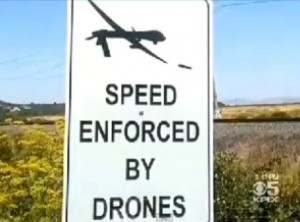Last Updated on by Adam Rosenblum Esq.

Last year, President Obama signed legislation requiring the Federal Aviation Administration (FAA) to create regulations for the licensing and testing of commercial drones by 2015.
As of October, the FAA had received more than 80 applications from entities seeking to use drones, including law enforcement agencies.
We know what you are thinking, and do not worry. These “drones” are not the aircrafts the military has been using in Afghanistan for hours on end. These drones are more like toy planes with cameras mounted on them. Not only that, but they can only fly in the air for about an hour at a time.
These unmanned aerial vehicles are already beginning to help officers investigate crime scenes by taking aerial photos of major auto accidents.
For instance, in Colorado, the Mesa County Sheriff’s Office has been using drones for about four years now. One is a small helicopter, which can stay airborne for nearly 15 minutes while the other is a fixed-wing aircraft that can stay in the air for about an hour.
They usually are only deployed twice a month and used for search-and-rescue missions or to take aerial photos at crime and accident scenes to help officers get a birds-eye view of what happened. “Otherwise they live in a box in the back of a van,” says Ben Miller, the drone program director.
Additionally, the University of North Dakota and the Grand Forks Sheriff’s Department started a research initiative on drone usage back in 2010. In its test phase, the drones were used to look for a drowning victim washed away in floodwaters and to take fatal traffic accident photos.
Although the aircrafts are used to help investigate major accidents, they are not deployed for every fender bender. Alan Frazier, an assistant professor with the university and part-time sheriff’s deputy, explained, “It wouldn’t be a fiscally responsible way of using this resource.” After all, drones like these can cost $25,000-$175,000 while a police helicopter costs $1.8 million to $2 million.
A research poll taken last year by Monmouth University in New Jersey discovered that of the more than 1,700 Americans surveyed, 80 percent support drones being used for search-and-rescue missions. Likewise, two-thirds are in favor of their usage to track escaped criminals and patrol United States borders for illegal immigrants.
However, less than one-quarter thought that drones should be used for issuing speeding tickets.
Nonetheless, most New York drivers will not have to worry about drones being used to issue them NY speeding tickets anytime soon.
Police say they are simply too costly for them to use regularly and are too bulky. After all, they cannot really be used to patrol for any long-term period of time and they present constitutional challenges when it comes to the Confrontation Clause. Can your NY traffic ticket attorney really cross-examine a drone?
Ultimately, even if the State of New York wanted to start using drones to bust you for speeding, they would have a hard time getting the program off the ground.
(Source: http://www.foxbusiness.com/personal-finance/2013/07/31/can-drone-bust-for-speeding)
As the founding attorney of Rosenblum Law, Adam has built a firm that prioritizes client success and legal excellence. His leadership and vision have established Rosenblum Law as a premier legal practice for traffic and criminal defense, ensuring that clients receive the highest level of advocacy and support.
